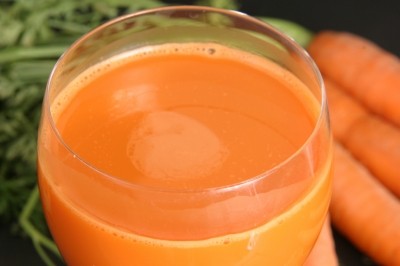Nano beta-carotene entrapment offers natural colour options
Nanostructures composed of alginic acid cross-linked by calcium ions could entrap beta-carotene, a fat-soluble compound, which could then be used to naturally colour water-based foods, researchers from Louisiana State University Agricultural Center and the University of Arkansas report in the Journal of Agricultural and Food Chemistry.
The study’s corresponding author Cristina Sabliov from LSU told FoodNavigator that the process offers several advantages over the alternatives, including a higher entrapment of beta-carotene, use of natural components to form the nanostructures, and the “possibility to change colour from dark orange to yellow by simply changing the concentration of the nanostructures with entrapped beta-carotene”.
Dr Sabliov added that the process involves steps, such as mixing and evaporation, which could be easily incorporated into an industrial scale process.
“The innovation resulted in response to a request from an industrial partner,” she explained. “We do have a patent filed on this process and expect more industrial interest in the future, now that the findings are public.”
The fall and rise of natural colours
Natural colours lost their appeal when synthetic colours arrived on the scene, as they provide less consistency, heat stability and colour range than their chemical alternatives. Moreover, natural colours are more expensive.
However, as consumer awareness increases over the link between diet and health and trends move towards more clean-label products, natural colourings are back in fashion.
Entrapment
Dr Sabliov and her co-workers sought to entrap the fat-soluble pigment beta-carotene with lecithin inside a water-soluble matrix composed of the alginic acid cross-linked with lecithin by the calcium ions.
The density of the nanoparticles increased on addition of the calcium, and also retarded the oxidation of beta-carotene, said the researchers.
Various methods of production were investigated, including the choice of solvent. The nanoparticles produced ranged from 120 to 180 nanometres when chloroform was used as the solvent, and from 500 to 950 nanometres when ethyl acetate was used.
Furthermore, the researchers note that the particles were stable over the pH range 3 to 7.
“It is concluded that the method proposed herein was capable of forming water-soluble nanoparticles with entrapped β-carotene of controlled functionality, as a result of the type of solvent and the amounts of alginate and calcium ions used,” concluded the researchers.
Ongoing improvements
Dr Sabliov confirmed that work was ongoing in this area. “We have developed several delivery systems not only for colorants, but also for vitamins, antioxidants, antifungals,” she said.
“We will continue to do so, with the goal of incorporating nanostructures in food systems for improved food quality and to promote human health.”
Source: Journal of Agricultural and Food Chemistry
Published online ahead of print, ASAP Article, doi:10.1021/jf900563a
"Ca2+ Cross-Linked Alginic Acid Nanoparticles for Solubilization of Lipophilic Natural Colorants"
Authors: C.E. Astete, C.M. Sabliov, F. Watanabe, A. Biris


















